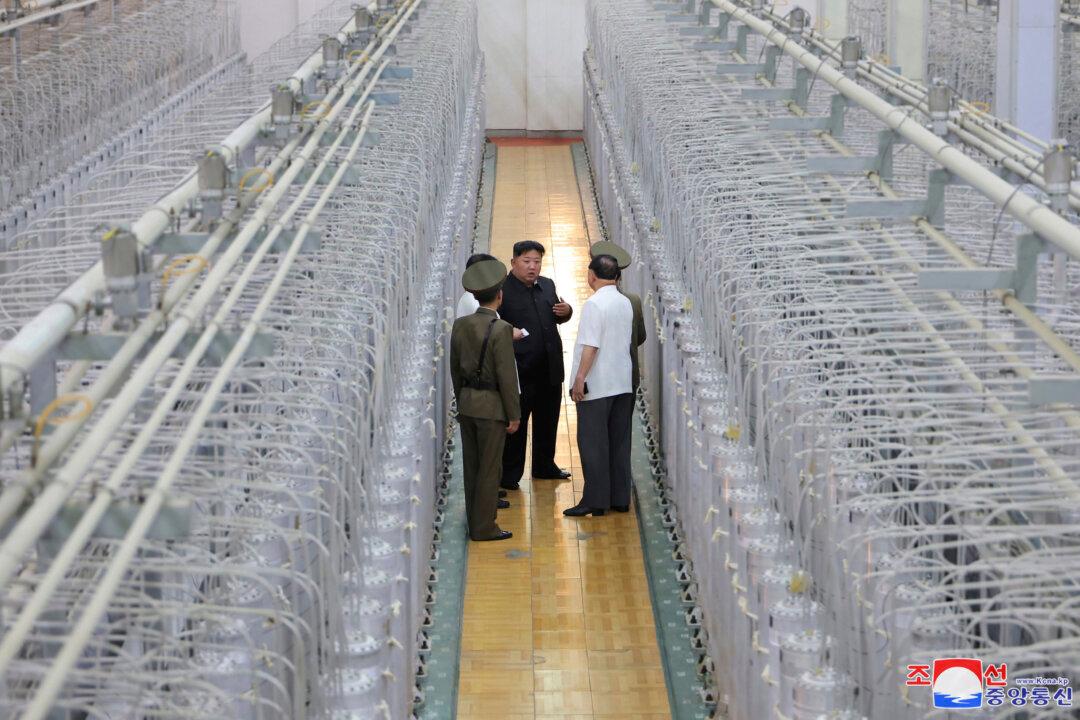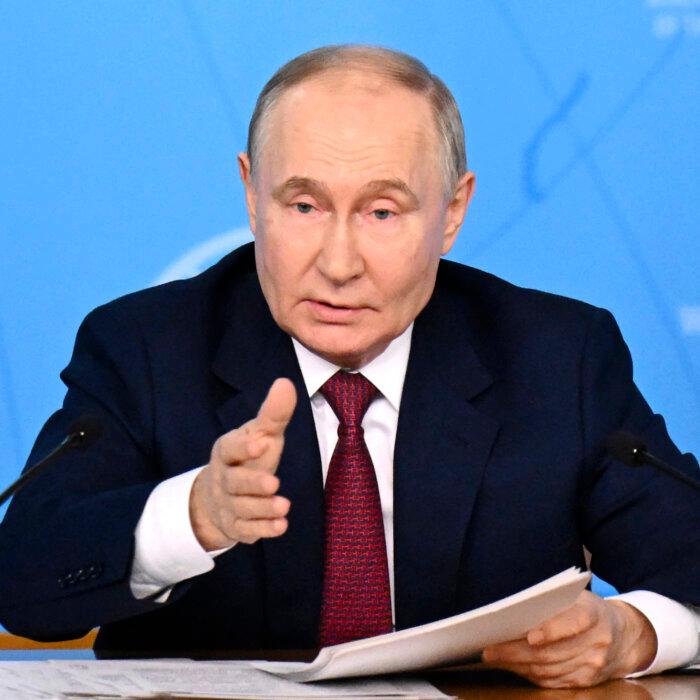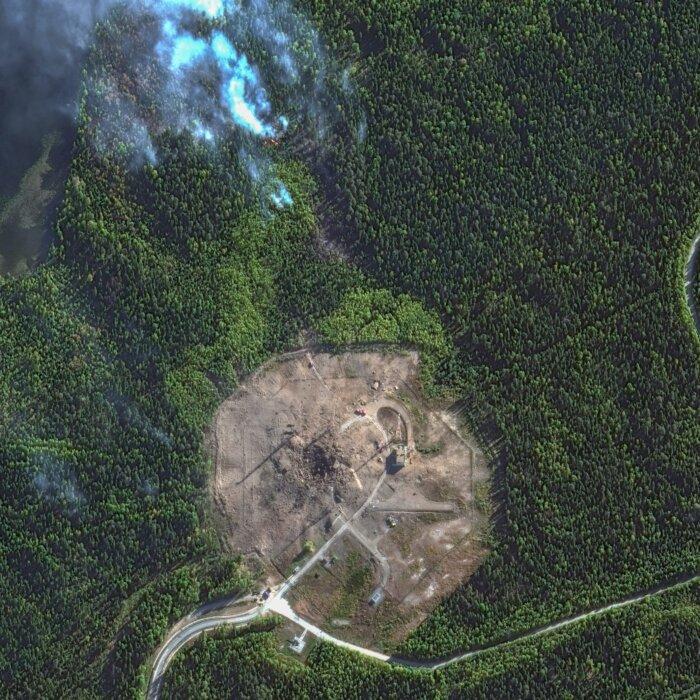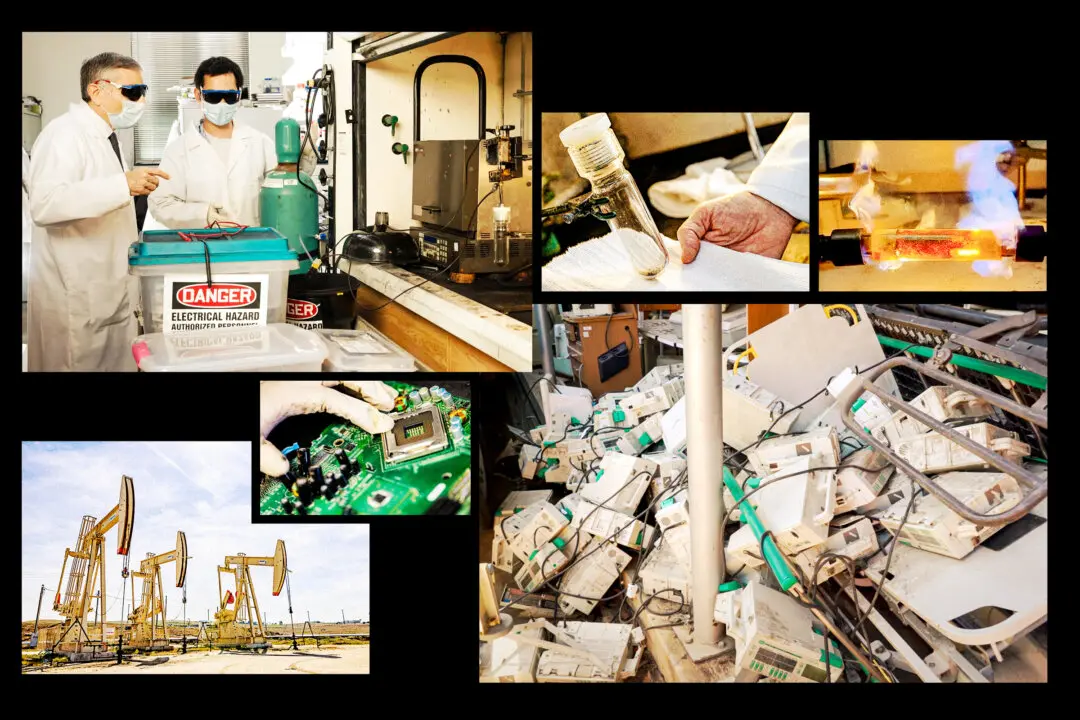North Korea has likely enriched enough uranium to build a “double-digit” number of nuclear bombs, according to South Korea’s spy agency.
On Sept. 26, during a closed-door parliamentary briefing, South Korea’s National Intelligence Service reported that North Korean leader Kim Jong Un is making significant progress in developing more powerful and accurate missiles aimed at South Korea.
North Korea’s Bomb Fuel Capacity
During the closed-door parliamentary briefing in Seoul, the National Intelligence Service said that Kim’s disclosure of the facility was likely a statement of defiance toward Washington ahead of the U.S. presidential election.This is meant to domestically showcase his military accomplishments amid deepening economic struggles, according to Lee Seong-kweun, one of the lawmakers who attended the briefing.
In terms of North Korea’s bomb fuel capacity, the agency said North Korea likely has about 70 kilograms (154 pounds) of plutonium and an unspecified but considerable amount of weapons-grade uranium.
This would be enough to build “at least a double-digit number” of weapons, Lee said.
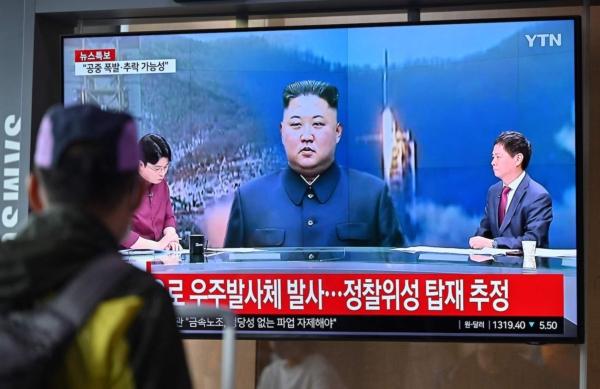
Uranium
On Sept. 13, North Korean state media released the first-ever photos of its uranium enrichment facility, though it did not disclose the location.According to South Korean lawmaker Park Sun-won, it was likely to be a site in Kangson, near the North Korean capital of Pyongyang.
The Kangson plant is one of two known sites in North Korea that have been linked to uranium enrichment activities. Analysts say North Korea likely has other hidden sites for enriching uranium.
Kim’s visit to the uranium enrichment site was followed by a North Korean missile test days later.
North Korean state media said the test launches on Sept. 18 involved two types of new missiles—one designed to deliver “super-large” conventional warheads and the other a “strategic” cruise missile, the latter of which could have been developed for nuclear strikes.
The weapons are needed for “self-defense and the capability for a preemptive attack,” from “anti-DPRK nuclear threats” from the “U.S. imperialists-led vassal forces,” the media report quotes the North Korean leader as saying.
North Korea’s nuclear program is banned under multiple U.N. Security Council resolutions.
Russia
On Sept. 25, released satellite images suggested that Russia tested a Sarmat intercontinental ballistic missile and failed, according to arms experts.The RS-28 Sarmat intercontinental ballistic missile, unofficially dubbed “Satan II” by NATO, is designed to deliver nuclear warheads to strike targets across vast distances, including the United States, Europe, and potentially other parts of the globe.
The images captured by space technology company Maxar on Sept. 21 show a crater about 60 meters (200 feet) wide at the launch silo at the Plesetsk Cosmodrome in northern Russia, revealing extensive damage that was not visible in pictures taken earlier in the month.
On Sept. 23, Russia said that it would not test a nuclear weapon as long as the United States refrains from doing so, after speculation that the Kremlin might start resuming such testing for the first time since 1990.
However, on Sept. 25, Russian President Vladimir Putin said that Russia could use nuclear weapons if it is attacked with conventional missiles and may consider any assault supported by a nuclear power to be a joint attack by the attacker and the nation supporting it.
“It is proposed that aggression against Russia by any non-nuclear state, but with the participation or support of a nuclear state, be considered as their joint attack on the Russian Federation,” Putin said during a meeting of Russia’s Security Council on Sept. 25.
